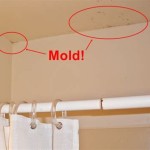How To Change The Color Of Your Bathroom Vanity
Changing the color of a bathroom vanity is a cost-effective way to update the appearance of a bathroom without undergoing a complete renovation. A fresh coat of paint or stain can significantly transform the look of the vanity, complementing other bathroom fixtures and creating a more cohesive and aesthetically pleasing space. The process requires careful planning, preparation, and execution to achieve a professional and durable finish.
This article outlines the necessary steps involved in changing the color of a bathroom vanity, covering everything from material selection to the application process. It aims to provide a comprehensive guide that enables homeowners to successfully complete this DIY project, enhancing the beauty and value of their homes.
Key Point 1: Preparation and Material Selection
The success of any painting or staining project hinges on thorough preparation. This involves gathering the necessary materials, properly cleaning the vanity, and meticulously preparing the surface for the new color. Neglecting these initial steps can lead to a substandard finish that is prone to chipping, peeling, or uneven coloration.
Materials Required:
A comprehensive list of materials is crucial to streamline the workflow and avoid interruptions during the project. This list includes:
* Cleaning Supplies: All-purpose cleaner, degreaser, scrub brush, and clean cloths are necessary to remove dirt, grime, and any existing buildup on the vanity surface. * Sandpaper: Different grits of sandpaper are required. Use a coarser grit (e.g., 80-120) for initial sanding to remove old finishes and smooth out imperfections. Finer grits (e.g., 220-320) are needed for smoothing the surface before priming and painting or staining. * Sandpaper Alternatives: Consider using a palm sander for large flat areas to expedite the sanding process. Chemical stripping can effectively remove old paint or stain, but requires careful handling due to the harsh chemicals involved. * Primer: A high-quality primer is essential for ensuring proper adhesion of the paint or stain and for blocking any existing stains or discoloration. Choose a primer specifically designed for the material of the vanity (e.g., wood, laminate, MDF). * Paint or Stain: Select a paint or stain that is suitable for bathroom environments, which are typically humid. Options include: * Paint: Oil-based paint offers excellent durability and moisture resistance, but may yellow over time and requires mineral spirits for cleanup. Latex (water-based) paint is easier to clean up, dries faster, and is available in a wider range of colors. For bathrooms, choose a paint with a satin or semi-gloss finish for increased durability and moisture resistance. * Stain: Stain penetrates the wood, enhancing its natural grain. Choose a stain that complements the existing wood or desired aesthetic. A topcoat of polyurethane or varnish is necessary to protect the stain and provide a durable, water-resistant finish. * Paintbrushes and Rollers: Invest in high-quality paintbrushes and rollers for a smooth and even application. Choose brushes with synthetic bristles for latex paint and natural bristles for oil-based paint. Foam rollers are ideal for achieving a smooth, non-textured finish. * Painter's Tape: Protect adjacent surfaces, such as walls, countertops, and flooring, with painter's tape. Ensure the tape is securely applied to prevent paint or stain bleed-through. * Drop Cloths: Cover the floor and surrounding areas with drop cloths to protect them from spills and splatters. * Putty Knife and Wood Filler: Use a putty knife and wood filler to repair any dents, scratches, or imperfections in the vanity surface. * Safety Gear: Wear safety glasses and a dust mask when sanding, and gloves when working with chemicals. Ensure adequate ventilation in the work area. * Optional: Consider using a paint sprayer for a professional-looking finish. However, paint sprayers require practice and proper technique to avoid runs and uneven coverage.Surface Preparation:
Proper surface preparation is paramount for a successful outcome.
* Removal of Hardware: Remove all hardware, such as knobs, pulls, hinges, and doors. Label each piece of hardware and store it in a safe place. Consider replacing old hardware with new ones to further enhance the vanity’s appearance. * Cleaning: Thoroughly clean the vanity with an all-purpose cleaner and degreaser to remove any dirt, grime, soap scum, or mildew. Rinse the surface with clean water and allow it to dry completely. * Sanding: Sand the entire surface of the vanity to create a slightly rough texture that will allow the primer and paint or stain to adhere properly. Start with a coarser grit sandpaper to remove any existing finishes or imperfections, then move to a finer grit for smoothing. If the existing finish is particularly thick or difficult to remove, consider using a chemical stripper. * Repairing Imperfections: Use a putty knife to apply wood filler to any dents, scratches, or imperfections in the vanity surface. Allow the filler to dry completely, then sand it smooth to blend with the surrounding surface. * Taping: Apply painter's tape to protect any areas that should not be painted or stained, such as walls, countertops, or flooring. Ensure the tape is securely applied and that there are no gaps where paint or stain could seep through. * Dusting: Thoroughly dust the vanity after sanding to remove any sanding residue. A tack cloth is particularly effective for removing fine dust particles.Key Point 2: Priming and Painting/Staining
Once the vanity is properly prepared, the next step is to apply the primer and then the paint or stain. The correct application technique is crucial for achieving a smooth, even, and durable finish.
Priming:
Applying primer is a critical step in the process, as it:
* Enhances Adhesion: Primer creates a bond between the surface and the paint or stain, ensuring that the color adheres properly and prevents chipping or peeling. * Blocks Stains: Primer blocks any existing stains or discoloration from bleeding through the new paint or stain. * Provides a Uniform Surface: Primer creates a uniform surface for the paint or stain, ensuring that the color is consistent and even across the entire vanity.Application Technique:
* Stir the Primer: Thoroughly stir the primer before applying it to ensure that the pigments are evenly distributed. * Apply a Thin, Even Coat: Apply a thin, even coat of primer using a paintbrush, roller, or paint sprayer. Avoid applying too much primer at once, as this can lead to runs and drips. * Work in Sections: Work in small sections, overlapping each stroke slightly to ensure complete coverage. * Allow to Dry Completely: Allow the primer to dry completely according to the manufacturer's instructions before proceeding to the next step. * Lightly Sand: Lightly sand the primed surface with fine-grit sandpaper (e.g., 320 grit) to remove any imperfections or brushstrokes. Dust the surface thoroughly before applying the paint or stain.Painting/Staining:
The application of paint or stain is the final step in transforming the color of the bathroom vanity. The choice between paint and stain depends on the desired aesthetic and the type of material the vanity is made of.
Application Technique:
* Stir the Paint/Stain: Thoroughly stir the paint or stain before applying it to ensure that the pigments are evenly distributed. * Apply a Thin, Even Coat: Apply a thin, even coat of paint or stain using a paintbrush, roller, or paint sprayer. Avoid applying too much paint or stain at once, as this can lead to runs, drips, or uneven coloration. * Work in Sections: Work in small sections, overlapping each stroke slightly to ensure complete coverage. * Allow to Dry Completely: Allow the paint or stain to dry completely according to the manufacturer's instructions before applying a second coat. * Apply a Second Coat (if necessary): Apply a second coat of paint or stain if necessary to achieve the desired color depth and coverage. Allow the second coat to dry completely before proceeding to the next step. * For Stain: Apply a topcoat of polyurethane or varnish to protect the stain and provide a durable, water-resistant finish. Apply the topcoat in thin, even coats, allowing each coat to dry completely before applying the next. Lightly sand between coats to ensure a smooth finish.Key Point 3: Reassembly and Finishing Touches
After the paint or stain has dried completely, the final step is to reassemble the vanity and add any finishing touches. This includes reattaching the hardware, removing the painter's tape, and thoroughly cleaning the work area.
Reassembly:
Carefully reattach all hardware, such as knobs, pulls, hinges, and doors. Ensure that the hardware is properly aligned and securely fastened. If necessary, adjust the hinges to ensure that the doors open and close smoothly.
Hardware Considerations:
* Cleaning the Hardware: Before reattaching the hardware, clean it thoroughly to remove any dirt, grime, or paint residue. Use a mild soap and water or a specialized metal cleaner. * Replacing the Hardware: Consider replacing old or outdated hardware with new hardware to further enhance the appearance of the vanity. Choose hardware that complements the new paint or stain color and the overall style of the bathroom. * Securing the Hardware: Ensure that all screws and fasteners are properly tightened to prevent the hardware from becoming loose or wobbly. If necessary, use wood glue to secure loose screws.Finishing Touches:
Once the vanity has been reassembled, perform these final tasks:
* Remove Painter's Tape: Carefully remove the painter's tape to reveal the newly painted or stained vanity. Use a utility knife to score along the edge of the tape before removing it to prevent the paint or stain from chipping or peeling. * Clean the Work Area: Thoroughly clean the work area, removing any drop cloths, paint cans, and other supplies. Dispose of any waste materials properly. * Inspect the Finish: Carefully inspect the finish of the vanity to ensure that there are no imperfections, such as runs, drips, or uneven coloration. Touch up any imperfections with a small amount of paint or stain. * Apply a Protective Coating (Optional): Consider applying a protective coating, such as wax or polish, to the painted or stained surface to further enhance its durability and water resistance. * Allow to Cure: Allow the paint or stain to fully cure according to the manufacturer's instructions before using the vanity. This may take several days or even weeks, depending on the type of paint or stain used.By following these steps carefully, one can successfully change the color of a bathroom vanity, transforming the look of the bathroom and increasing the value of the home.

Paint Bathroom Vanity Countertop Sink So Easy A Piece Of Rainbow
:max_bytes(150000):strip_icc()/grey-08207753dd3b407caadbbb47253586a3.jpg?strip=all)
30 Bathroom Cabinet Color Ideas From Basic To Bold

Updating A Bathroom Vanity

Paint Bathroom Vanity Countertop Sink So Easy A Piece Of Rainbow

Transform Your Bathroom With Sink Paint The Honeycomb Home

Transform Your Bathroom With Sink Paint The Honeycomb Home

How To Paint Bathroom Vanity Cabinets Tutorial Benjamin Moore

How To Paint A Bathroom Countertop Ace Hardware

How To Paint Laminate Cabinets Love Renovations

How To Paint A Bathroom Vanity For Custom Look
Related Posts







